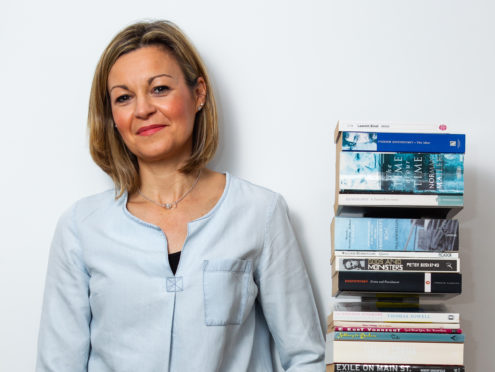
My grandmother could not have sounded more certain. “I’ll be there at your wedding,” she told me as she rested in bed just days before starting chemotherapy.
Diagnosed weeks before with ovarian cancer that had been left undetected for what we feared to be at least a year, the chemo was our one hope after surgeons had opened her up only to find there were too many tumours to operate.
But she didn’t survive the treatment. I was 15 and, at 69, my grandmother was gone, without warning and way too early.
She died from a reaction to her first round of chemo on December 21, 1987, the day of the Lockerbie disaster – a tragedy on an enormous scale, dwarfed in my mind by my own personal, overwhelming loss.
I never forgot what she said about my wedding, though at 15 that day was just a distant thought somewhere far away on life’s horizon. She told me with such conviction she would be there and I believed her. Yet, of course, following her death I knew it wasn’t possible. Yet it happened.
Two days before my wedding in 2003, I too was resting in bed one afternoon, taking a 10-minute break from the mayhem of last-minute preparations.
As I lay there I was running through the checklist in my mind. I closed my eyes and, in an instant, I lapsed into what I can only describe as the most vivid daydream that, though conscious, took me to another place entirely as though watching a movie in my own mind.
I was standing at the top of the staircase in my parents’ home in the Borders from where I would leave on my wedding day, wearing the white dress all ready to go. My mother and sister were fussing in the bedroom nearby and I was anxiously waiting for them to come out and join me.
Then, to my left, I sensed someone on the staircase. I turned to see my grandmother – I called her Nanny – walking up the final few steps towards me. She said nothing, just simply smiled.
Then I snapped back into reality and she was gone.
Whatever this was – it had lasted just seconds – it was enough. Nanny had sent her message: She was there and she would be at my wedding.
I told my mum what had happened and, rather than just dismissing it as a dream, she believed me. There was sadness in her eyes that she hadn’t experienced something similar, but she was happy and comforted by what I’d seen.
Leaping forward a few years, I had two toddlers and my sister was visiting my mother with her three-year-old daughter and newborn twins. My mum, as ever, was rushing around trying to look after everybody and burning herself out. She was anxious because the twins had been born premature and were still only a few weeks old.
They required regular feeds and significant care. Adding in three toddlers, it was pandemonium when we were all together.
Exhausted one evening having just finished her ironing – she has a hot press in her laundry room that she uses to run clothes and sheets through – she sat down and rested her eyes for a moment.
Then, suddenly, she saw herself back in the laundry room, running sheets through the press and worrying about the twins and her precious young family.
The door opened behind her and Nanny was standing there smiling at her. Just 18 months before my grandfather – always Papa to me – had also died and, though my mum could only see her mother in that moment, she also sensed Papa was nearby.
They were telling her, without words, that they were with her and all was well.
We’re not alone within our family to have had these experiences. Once felt, there is not a person on earth who could persuade you they were anything other than what we believe them to be – contact from loved ones on the other side.
And so, shortly after my mother’s experience, and just months after the death of my cousin from cancer, I began to write a novel inspired by the belief that goodbye is not forever. Set in Edinburgh, From the Outside tells the story of Harry Melville who observes the aftermath of his death in a car crash aged 44, and the impact on his wife, Sarah, and twin brother, Ben.
The novel asks whether in death we can right the wrongs we carry with us to the grave.
From the Outside, released by Urbane Publications, launches at Blackwells, South Bridge, Edinburgh, on July 4 at 6.30pm

Enjoy the convenience of having The Sunday Post delivered as a digital ePaper straight to your smartphone, tablet or computer.
Subscribe for only £5.49 a month and enjoy all the benefits of the printed paper as a digital replica.
Subscribe